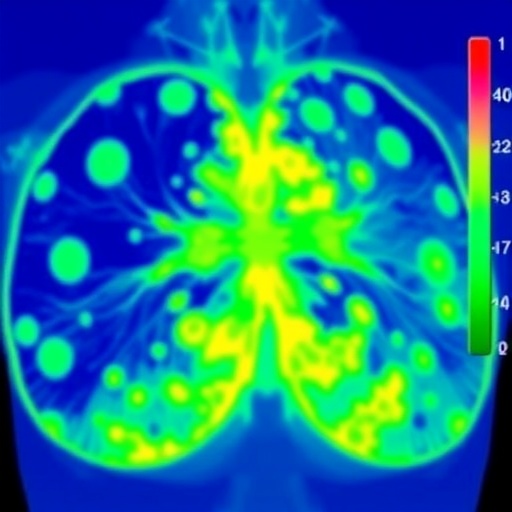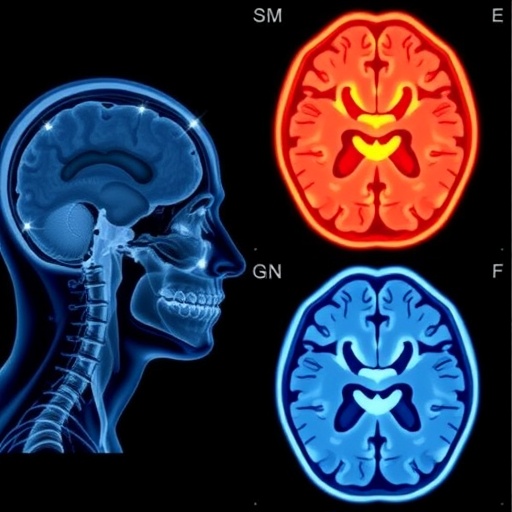In a groundbreaking advance for cancer diagnostics, researchers have harnessed the power of Attenuated Total Reflectance Fourier-Transform Infrared (ATR-FTIR) spectroscopy to delve into the elusive biochemical landscape of metaplastic breast carcinoma (MBC). This rare but aggressive form of breast cancer, accounting for less than 1% of breast neoplasms, has long evaded detailed molecular characterization. Now, through meticulous spectroscopic analysis, scientists are beginning to unravel the distinct molecular signatures that differentiate MBC not only from normal breast tissue but also from more common breast cancer subtypes such as ductal carcinoma in situ (DCIS) and invasive ductal carcinoma (IDC).
This retrospective study analyzed archival tissue specimens, including 10 MBC cases, 12 DCIS cases, and 31 IDC cases, with 10 normal breast tissues serving as controls. Employing ATR-FTIR spectroscopy on unstained histological sections, the researchers captured intricate vibrational signatures of cellular biomolecules. ATR-FTIR excels in capturing molecular fingerprints by measuring absorbance at specific wavenumbers, each corresponding to various biochemical components like proteins, lipids, nucleic acids, and glycogen. This approach provided a nuanced spectral profile, offering a window into the biochemical milieu of different breast tissue states.
Spectral analysis revealed a general trend of lower mean peak intensities across all carcinoma subtypes compared with normal breast tissue. Importantly, certain spectral ratios emerged as hallmarks of carcinomatous transformation. The phosphate-related ratio A1237/A1080 and the glycogen-associated ratio A1043/1543 were significantly elevated in cancerous tissues, underscoring disruptions in nucleic acid and carbohydrate metabolism during oncogenesis. Moreover, the nucleocytoplasmic index, quantified by the ratio A1080/A1632, also rose in malignant tissues, reflecting pronounced biochemical alterations at the cellular level.
One of the study’s most remarkable findings is the diagnostic potential of specific protein peaks. Peaks corresponding to Amide A (3,280 cm⁻¹), Amide I (1,632 cm⁻¹), and β-sheet Amide II (between 1,543 and 1,535 cm⁻¹) displayed robust discriminative power between normal and carcinomatous states. Receiver operating characteristic (ROC) curve analysis underscored the exceptional efficacy of peak 3,280 in differentiating cancerous tissue from normal breast tissue, with an area under the curve (AUC) ranging between 0.93 and 0.96. Such spectral peaks not only illuminate the biochemical disruptions in protein folding and secondary structure but also offer tangible biomarkers for clinical detection.
Moreover, the study successfully stratified different carcinoma subtypes. For instance, peak 2,922 cm⁻¹ showed specificity in distinguishing normal tissue from IDC, though with moderate accuracy (AUC ≈ 0.7). The lipid-associated peak at 1,744 cm⁻¹ proved effective in differentiating DCIS from metaplastic carcinoma, demarcated by an AUC of 0.7. These findings highlight nuanced biochemical differences underlying these histologically distinct breast cancer types, with potential implications for tailored diagnostics and therapeutic targeting.
Perhaps the most clinically transformative insight stems from the nucleocytoplasmic ratio (A1080/A1632), which yielded near-perfect diagnostic accuracy. This ratio distinguished normal breast tissue from carcinomas with an astounding AUC close to 1.0. Beyond that, it differentiated DCIS from IDC and DCIS from metaplastic carcinoma with high precision (AUC ≈ 0.86 and 0.8, respectively). The robustness of this ratio aligns elegantly with the well-established cytopathological criterion of altered nucleocytoplasmic ratios in malignancy, now quantified through a precise spectroscopic measure.
Hierarchical cluster analysis and biochemical cutoff point evaluation revealed intricate interactions and chemical relationships among protein, lipid, and amide groups. Notably, protein peaks at 1,453 and 1,386 cm⁻¹ clustered synergistically with lipid peaks at 1,446 and 1,394 cm⁻¹, alongside amide peaks at 1,632 and 3,280 cm⁻¹. Such clustering underscores the complex biochemical networks that underpin carcinogenic transformations and provides a multilayered understanding of tumor biochemistry. These inter-peak relationships could inspire novel panels of spectroscopic biomarkers rather than relying on single peak measurements.
This study marks a significant stride in the translational application of vibrational spectroscopy for breast cancer diagnostics. While statistical significance alone does not equate to clinical relevance, the combined statistical and ROC analyses presented here provide compelling evidence for a suite of spectroscopic biomarkers with tangible diagnostic utility, especially in challenging cases involving metaplastic carcinoma. Protein-related spectral markers, in particular, stand out as candidates for integration into clinical diagnostic workflows, offering rapid, label-free, and objective biochemical assessment.
The implications extend beyond diagnostics. By illuminating the biochemical underpinnings distinguishing metaplastic carcinoma, this research enriches the broader understanding of tumor biology and heterogeneity. Metaplastic carcinoma’s distinct spectral profile hints at unique protein conformations, lipid alterations, and nucleic acid modifications that could be exploited therapeutically. Future investigations may harness ATR-FTIR spectroscopy not only for diagnosis but also for monitoring treatment responses and predicting clinical outcomes.
Despite its promising findings, this investigation is understandably preliminary, warranting validation in larger, prospective cohorts. Future research should also explore the integration of ATR-FTIR spectroscopy with other omics approaches, such as proteomics and genomics, to create a comprehensive molecular atlas of breast cancer subtypes. The development of portable ATR-FTIR devices could further democratize access to this technology, enabling rapid intraoperative histopathological assessments and real-time surgical decision-making.
In conclusion, this pioneering spectral study uncovers a rich biochemical signature landscape in metaplastic breast carcinoma and related breast cancer subtypes through ATR-FTIR spectroscopy. The nucleocytoplasmic ratio based on absorbance peaks at 1,080 and 1,632 cm⁻¹ emerges as a near-ideal discriminant that encapsulates carcinogenic cellular alterations with remarkable precision. Complemented by other protein and lipid peaks exhibiting strong diagnostic power, these findings herald a new era where vibrational spectroscopy synergizes with conventional pathology, ushering in more precise, rapid, and objective breast cancer diagnostics. Such advances hold the promise of improving early detection, prognosis, and personalized treatment strategies for patients battling diverse forms of this complex malignancy.
Subject of Research:
Article Title: ATR-FTIR Spectroscopy for Differentiating Metaplastic Breast Carcinoma, Ductal Carcinoma In Situ, and Invasive Ductal Carcinoma: A Retrospective Study
News Publication Date: 31-Jul-2025
Web References: http://dx.doi.org/10.14218/ERHM.2025.00014
Keywords: Breast carcinoma, Biomarkers, ATR-FTIR spectroscopy, Metaplastic breast carcinoma, Ductal carcinoma in situ, Invasive ductal carcinoma, Vibrational spectroscopy, Diagnostic biomarkers, Protein peaks, Nucleocytoplasmic ratio





